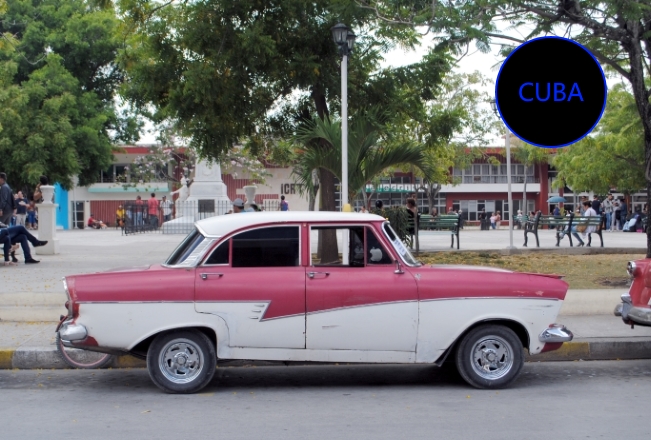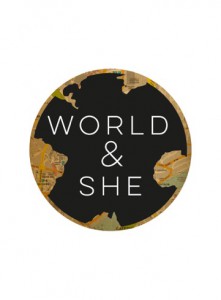Three Beautiful Places To Explore in Holguin

In Holguin you must do as the Holguin’s do.
The people of Holguin go about their business at an easy pace. Sauntering around the city they stop for a rest in the city’s many parks, where the benches sit invitingly in the dappled shade of tall trees. Or they take a seat in one of the tiny corner stores that sell coffee and counterfeit CDs. Or they kick back in a rocker on a porch, not necessarily their rocker and not necessarily their porch.
We have no plans, nothing we need to do and nowhere to go outside the limits of this tiny city. Our only task is to find places to drink coffee in the mornings, coke in the thirsty afternoons and beer when the sun goes down.
People say the food in Cuba is bad and they’re not kidding. We eat a huge breakfast prepared by the owner of our casa, who talks and talks to us in Spanish even though it’s clear that we don’t understand a word of what she’s saying, so we’re not hungry until dinner time. This is lucky because the snacks on offer are almost inedible. I say ‘almost’ because I’m greedy and have to give these things a try.
I buy heavy, greasy pastry things filled with unsweetened jam or is it bean paste? I don’t know but I can’t get it down and it ends up in the bin. The alternative is sloppy undercooked pizza that I can’t take the time to slice because there are so many flies trying to land on it or stale bread buns with a slab of spam in the centre, nicely warmed in the sun. I’m sure there are better things to come.
Parque Calixto Garcia
Parque Calixto Garcia, Holguin’s main square, reminds me of Hill Valley town square on Back to the Future. The look of the town square changes in the films depending on which year Doc and Marty have time-travelled to but in Holguin it’s definitely the first film that springs to mind. I never dreamt that Cuba would look so much like America in 1955.
All around the Parque Calixto Garcia are intriguing buildings like the Centro de Arte and the Bibliothece Alex Urquiola and we’re half-heartedly thinking about trying to get inside some of them when we meet Ruben (pronounced Roo-een). Ruben steps in as a translator when a man selling peanuts comes by and a few minutes later we’re sat in his favourite music café having a drink and talking about bands. A recent graduate, Ruben had nothing to do that day and gave us a much-appreciated walking tour of his hood. Every time we went to the park after that Ruben was there and we all said hi and chatted like good friends.
Of course we never told him this but Ruben made his appearance in our trip at exactly the right time. We needed a friendly face, a super-enthusiastic, goofy, friendly face that could speak to us in English and make us feel welcome. It’s amazing how just a few words with one person can put you at ease in a new place. A city can unfold in front of you, its streets opening up like a flower opens its petals to the sun, at the lightest touch of one person’s friendly advice.
UNEAC Holguin
If you only visit one UNEAC (La Unión de Escritores y Artistas de Cuba/Cuban Union of Writers and Artists) during your time in Cuba, make it the one in Holguin. That’s what the guide said. So off we went and even now I couldn’t tell you what the place was or why people were there.
The building was as lovely as I had already come to expect with palatial rooms backing onto a sunny, hidden courtyard. We walk slowly to give someone the chance to stop us and when no one does we take a seat. It’s empty apart from a fat tabby cat and an older couple whose table is decked with huge stacks of paper and crowned with a 1 litre bottle of Amaretto.
In the darkest depth of the far corner of the courtyard there’s an old-fashioned wooden bar. If you want a slug of hard liquor at 11am it’s a great bar but as it has no water, no soft drinks, no ice, nothing except rum, whisky and vodka, really, we leave the bartender alone and look at a small exhibition of old photos of Holguin. Most of them are bad prints, sun-bleached and hanging half out of their frames but still it’s unmistakeable – these photos may have been taken 70 years ago but Holguin still looks exactly the same.
Museo de Historia Provincial
One of the brightest buildings on Calixto Garcia is the Museo de Historia Provincial which we visit on our second afternoon in Holguin. The morning was swallowed up with three chores –an attempt access the internet, reserve tickets for a bus to Santiago and buy a Spanish phrasebook – all compete fails.
The Museo de Historia Provincial is your standard old school museum. It has huge galleries, unlit but open to the street and offering glimpses of a sun-bleached courtyard beyond. Its exhibits sit sadly under a dusting of neglect, little papers labels give names but no insight and in the corners of the galleries sit napping attendants in garden chairs. It feels like a bit of a waste of time until the curator/director and everything in between offers us a tour.
We whizz around the galleries at top speed with a lot of what she says lost in the gap between her accent and my poor listening. The building itself is pure elegance reduced in places to a hoarder’s nest and the curator shows us the chaotic back offices and ‘under renovation’ art gallery that has two inches of dust on the floor. She kicks some plasterboard away and ushers us out onto the balcony that offers a perfect view of Parque Calixto Garcia. I take a photo and she tells me that I’m standing on the exact same spot as Fidel Castro when he gave a speech to the people of Holguin but I don’t know if that’s true.
Our tour comes to an end in the ‘Gallery of Cuban Music’. It’s human to want to touch beautiful things and surrounded by hundred year old gramophones and musical instruments I put my hands in my pockets. It’s cool though, apparently, to touch things and the curator picks up a record of Cuban music from the fifties, places it on one of the ancient gramophones and fires it up.
I have one of those moments where I think, yeah, I’m going to remember this forever, except I can’t quite remember the music and I didn’t make a note of what it was. The voice of the singer dies out replaced by vinyl fizz and crackle. The curator wants to stop the record player but she doesn’t know how so, leaving the needle in place, presses her fingers down on the record to stop it spinning. We thank her for her time and leave.
These are my ‘three places to go in Holguin’ because when I think of Holguin now it’s these three places I remember most clearly and when I look back at my notebook these are the places I made notes about. If you ever go to Holguin your three places will undoubtedly be completely different and I’d love it if you’d tell me about them below.








